He Liu
GLM-4.5: Agentic, Reasoning, and Coding (ARC) Foundation Models
Aug 08, 2025Abstract:We present GLM-4.5, an open-source Mixture-of-Experts (MoE) large language model with 355B total parameters and 32B activated parameters, featuring a hybrid reasoning method that supports both thinking and direct response modes. Through multi-stage training on 23T tokens and comprehensive post-training with expert model iteration and reinforcement learning, GLM-4.5 achieves strong performance across agentic, reasoning, and coding (ARC) tasks, scoring 70.1% on TAU-Bench, 91.0% on AIME 24, and 64.2% on SWE-bench Verified. With much fewer parameters than several competitors, GLM-4.5 ranks 3rd overall among all evaluated models and 2nd on agentic benchmarks. We release both GLM-4.5 (355B parameters) and a compact version, GLM-4.5-Air (106B parameters), to advance research in reasoning and agentic AI systems. Code, models, and more information are available at https://github.com/zai-org/GLM-4.5.
Precise Facial Landmark Detection by Dynamic Semantic Aggregation Transformer
Dec 01, 2024



Abstract:At present, deep neural network methods have played a dominant role in face alignment field. However, they generally use predefined network structures to predict landmarks, which tends to learn general features and leads to mediocre performance, e.g., they perform well on neutral samples but struggle with faces exhibiting large poses or occlusions. Moreover, they cannot effectively deal with semantic gaps and ambiguities among features at different scales, which may hinder them from learning efficient features. To address the above issues, in this paper, we propose a Dynamic Semantic-Aggregation Transformer (DSAT) for more discriminative and representative feature (i.e., specialized feature) learning. Specifically, a Dynamic Semantic-Aware (DSA) model is first proposed to partition samples into subsets and activate the specific pathways for them by estimating the semantic correlations of feature channels, making it possible to learn specialized features from each subset. Then, a novel Dynamic Semantic Specialization (DSS) model is designed to mine the homogeneous information from features at different scales for eliminating the semantic gap and ambiguities and enhancing the representation ability. Finally, by integrating the DSA model and DSS model into our proposed DSAT in both dynamic architecture and dynamic parameter manners, more specialized features can be learned for achieving more precise face alignment. It is interesting to show that harder samples can be handled by activating more feature channels. Extensive experiments on popular face alignment datasets demonstrate that our proposed DSAT outperforms state-of-the-art models in the literature.Our code is available at https://github.com/GERMINO-LiuHe/DSAT.
Small Scale Data-Free Knowledge Distillation
Jun 12, 2024Abstract:Data-free knowledge distillation is able to utilize the knowledge learned by a large teacher network to augment the training of a smaller student network without accessing the original training data, avoiding privacy, security, and proprietary risks in real applications. In this line of research, existing methods typically follow an inversion-and-distillation paradigm in which a generative adversarial network on-the-fly trained with the guidance of the pre-trained teacher network is used to synthesize a large-scale sample set for knowledge distillation. In this paper, we reexamine this common data-free knowledge distillation paradigm, showing that there is considerable room to improve the overall training efficiency through a lens of ``small-scale inverted data for knowledge distillation". In light of three empirical observations indicating the importance of how to balance class distributions in terms of synthetic sample diversity and difficulty during both data inversion and distillation processes, we propose Small Scale Data-free Knowledge Distillation SSD-KD. In formulation, SSD-KD introduces a modulating function to balance synthetic samples and a priority sampling function to select proper samples, facilitated by a dynamic replay buffer and a reinforcement learning strategy. As a result, SSD-KD can perform distillation training conditioned on an extremely small scale of synthetic samples (e.g., 10X less than the original training data scale), making the overall training efficiency one or two orders of magnitude faster than many mainstream methods while retaining superior or competitive model performance, as demonstrated on popular image classification and semantic segmentation benchmarks. The code is available at https://github.com/OSVAI/SSD-KD.
Transparent Object Depth Completion
May 24, 2024Abstract:The perception of transparent objects for grasp and manipulation remains a major challenge, because existing robotic grasp methods which heavily rely on depth maps are not suitable for transparent objects due to their unique visual properties. These properties lead to gaps and inaccuracies in the depth maps of the transparent objects captured by depth sensors. To address this issue, we propose an end-to-end network for transparent object depth completion that combines the strengths of single-view RGB-D based depth completion and multi-view depth estimation. Moreover, we introduce a depth refinement module based on confidence estimation to fuse predicted depth maps from single-view and multi-view modules, which further refines the restored depth map. The extensive experiments on the ClearPose and TransCG datasets demonstrate that our method achieves superior accuracy and robustness in complex scenarios with significant occlusion compared to the state-of-the-art methods.
TransFR: Transferable Federated Recommendation with Pre-trained Language Models
Feb 02, 2024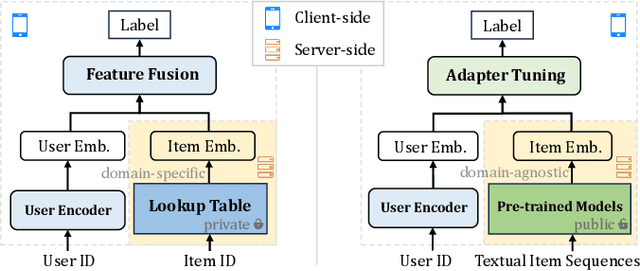

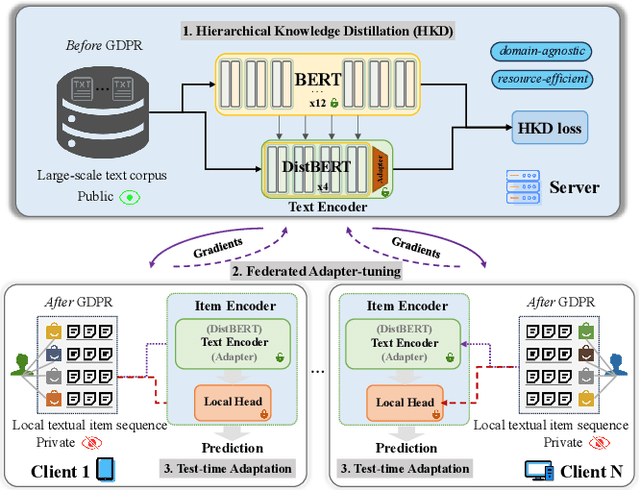

Abstract:Federated recommendations (FRs), facilitating multiple local clients to collectively learn a global model without disclosing user private data, have emerged as a prevalent architecture for privacy-preserving recommendations. In conventional FRs, a dominant paradigm is to utilize discrete identities to represent users/clients and items, which are subsequently mapped to domain-specific embeddings to participate in model training. Despite considerable performance, we reveal three inherent limitations that can not be ignored in federated settings, i.e., non-transferability across domains, unavailability in cold-start settings, and potential privacy violations during federated training. To this end, we propose a transferable federated recommendation model with universal textual representations, TransFR, which delicately incorporates the general capabilities empowered by pre-trained language models and the personalized abilities by fine-tuning local private data. Specifically, it first learns domain-agnostic representations of items by exploiting pre-trained models with public textual corpora. To tailor for federated recommendation, we further introduce an efficient federated fine-tuning and a local training mechanism. This facilitates personalized local heads for each client by utilizing their private behavior data. By incorporating pre-training and fine-tuning within FRs, it greatly improves the adaptation efficiency transferring to a new domain and the generalization capacity to address cold-start issues. Through extensive experiments on several datasets, we demonstrate that our TransFR model surpasses several state-of-the-art FRs in terms of accuracy, transferability, and privacy.
HRTF upsampling with a generative adversarial network using a gnomonic equiangular projection
Jun 09, 2023



Abstract:An individualised head-related transfer function (HRTF) is essential for creating realistic virtual reality (VR) and augmented reality (AR) environments. However, acoustically measuring high-quality HRTFs requires expensive equipment and an acoustic lab setting. To overcome these limitations and to make this measurement more efficient HRTF upsampling has been exploited in the past where a high-resolution HRTF is created from a low-resolution one. This paper demonstrates how generative adversarial networks (GANs) can be applied to HRTF upsampling. We propose a novel approach that transforms the HRTF data for convenient use with a convolutional super-resolution generative adversarial network (SRGAN). This new approach is benchmarked against two baselines: barycentric upsampling and a HRTF selection approach. Experimental results show that the proposed method outperforms both baselines in terms of log-spectral distortion (LSD) and localisation performance using perceptual models when the input HRTF is sparse.
Towards Solving Fuzzy Tasks with Human Feedback: A Retrospective of the MineRL BASALT 2022 Competition
Mar 23, 2023

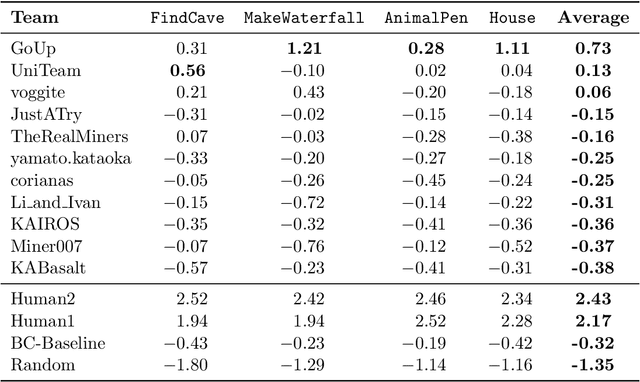
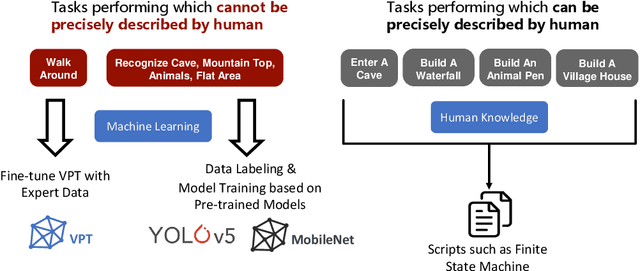
Abstract:To facilitate research in the direction of fine-tuning foundation models from human feedback, we held the MineRL BASALT Competition on Fine-Tuning from Human Feedback at NeurIPS 2022. The BASALT challenge asks teams to compete to develop algorithms to solve tasks with hard-to-specify reward functions in Minecraft. Through this competition, we aimed to promote the development of algorithms that use human feedback as channels to learn the desired behavior. We describe the competition and provide an overview of the top solutions. We conclude by discussing the impact of the competition and future directions for improvement.
Accurate Virus Identification with Interpretable Raman Signatures by Machine Learning
Jun 05, 2022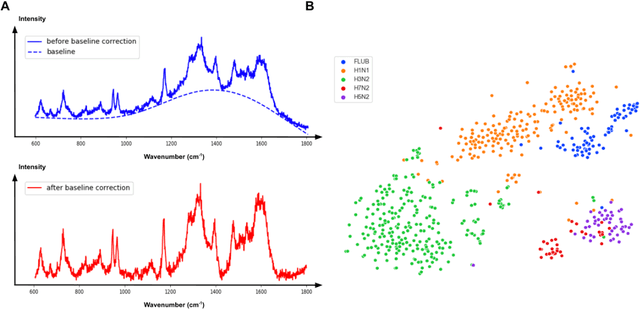
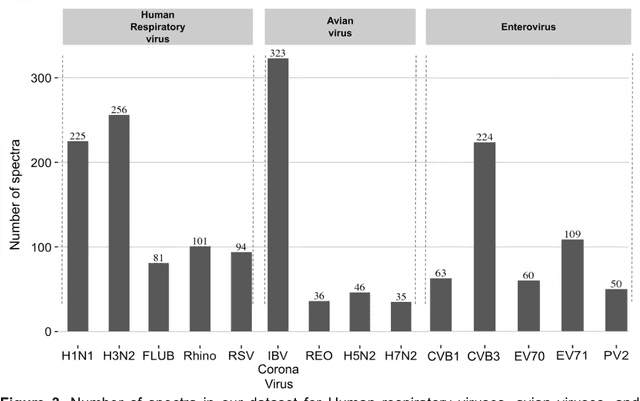
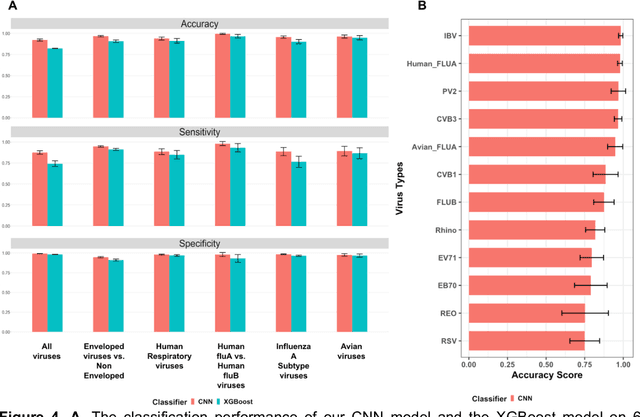
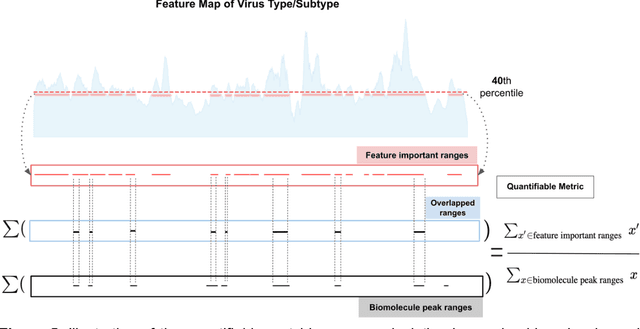
Abstract:Rapid identification of newly emerging or circulating viruses is an important first step toward managing the public health response to potential outbreaks. A portable virus capture device coupled with label-free Raman Spectroscopy holds the promise of fast detection by rapidly obtaining the Raman signature of a virus followed by a machine learning approach applied to recognize the virus based on its Raman spectrum, which is used as a fingerprint. We present such a machine learning approach for analyzing Raman spectra of human and avian viruses. A Convolutional Neural Network (CNN) classifier specifically designed for spectral data achieves very high accuracy for a variety of virus type or subtype identification tasks. In particular, it achieves 99% accuracy for classifying influenza virus type A vs. type B, 96% accuracy for classifying four subtypes of influenza A, 95% accuracy for differentiating enveloped and non-enveloped viruses, and 99% accuracy for differentiating avian coronavirus (infectious bronchitis virus, IBV) from other avian viruses. Furthermore, interpretation of neural net responses in the trained CNN model using a full-gradient algorithm highlights Raman spectral ranges that are most important to virus identification. By correlating ML-selected salient Raman ranges with the signature ranges of known biomolecules and chemical functional groups (for example, amide, amino acid, carboxylic acid), we verify that our ML model effectively recognizes the Raman signatures of proteins, lipids and other vital functional groups present in different viruses and uses a weighted combination of these signatures to identify viruses.
* 23 pages, 8 figures
Multimodal Dual Emotion with Fusion of Visual Sentiment for Rumor Detection
Apr 25, 2022



Abstract:In recent years, rumors have had a devastating impact on society, making rumor detection a significant challenge. However, the studies on rumor detection ignore the intense emotions of images in the rumor content. This paper verifies that the image emotion improves the rumor detection efficiency. A Multimodal Dual Emotion feature in rumor detection, which consists of visual and textual emotions, is proposed. To the best of our knowledge, this is the first study which uses visual emotion in rumor detection. The experiments on real datasets verify that the proposed features outperform the state-of-the-art sentiment features, and can be extended in rumor detectors while improving their performance.
Deep Probabilistic Graph Matching
Jan 05, 2022
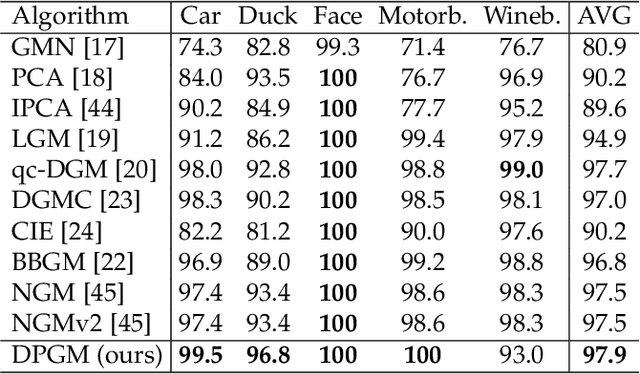
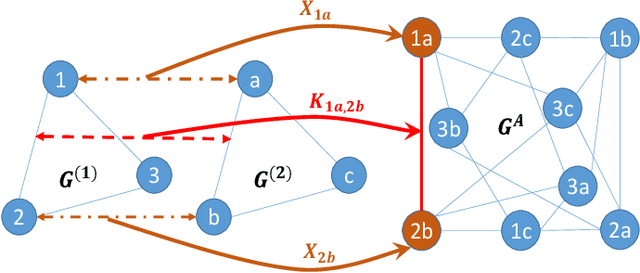
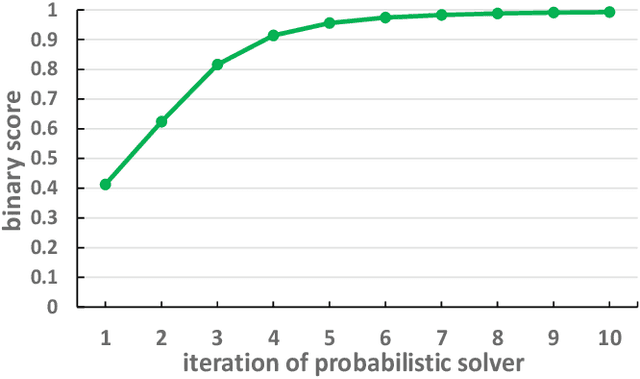
Abstract:Most previous learning-based graph matching algorithms solve the \textit{quadratic assignment problem} (QAP) by dropping one or more of the matching constraints and adopting a relaxed assignment solver to obtain sub-optimal correspondences. Such relaxation may actually weaken the original graph matching problem, and in turn hurt the matching performance. In this paper we propose a deep learning-based graph matching framework that works for the original QAP without compromising on the matching constraints. In particular, we design an affinity-assignment prediction network to jointly learn the pairwise affinity and estimate the node assignments, and we then develop a differentiable solver inspired by the probabilistic perspective of the pairwise affinities. Aiming to obtain better matching results, the probabilistic solver refines the estimated assignments in an iterative manner to impose both discrete and one-to-one matching constraints. The proposed method is evaluated on three popularly tested benchmarks (Pascal VOC, Willow Object and SPair-71k), and it outperforms all previous state-of-the-arts on all benchmarks.
 Add to Chrome
Add to Chrome Add to Firefox
Add to Firefox Add to Edge
Add to Edge